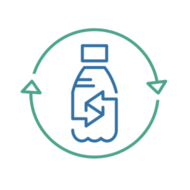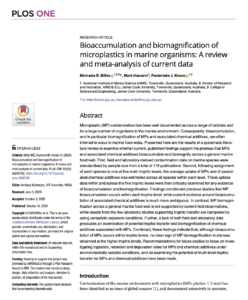Growing Evidence Links Bodily Plastics to Disease
Accumulating research confirms what we have suspected for a long time – plastic particles and the chemicals they contain are not merely environmental pollutants but have found their way into the human body, where they are increasingly being linked to a range of adverse health effects and diseases. Microplastics (less than 5 mm in size) and nanoplastics (even smaller, less than 1 micrometer) are entering our bodies through ingestion, inhalation, and potentially dermal contact, raising significant concerns among the scientific and medical communities.
Once inside the body, these plastic particles have been detected in various organs and tissues, including the lungs, gut, blood, placenta, and even the brain. The potential mechanisms by which plastics may contribute to disease are multifaceted and include:
- Inflammation: The physical presence of plastic particles can trigger immune responses, leading to chronic inflammation in tissues and organs. This persistent inflammation is a known contributor to a variety of diseases, including cardiovascular disorders, inflammatory bowel disease, and certain cancers.
- Oxidative Stress and Cellular Damage: Plastics and their associated chemicals can induce oxidative stress, an imbalance between free radicals and antioxidants in the body. This can damage cells, DNA, and proteins, potentially leading to a breakdown in normal physiological function and the development of diseases.
- Leaching of Chemical Additives: Plastics contain numerous chemical additives to provide them with specific properties (e.g., flexibility, durability, color). Many of these additives, such as phthalates and bisphenols (like BPA), are known endocrine disruptors. These chemicals can interfere with the body’s hormonal system, which regulates crucial processes like metabolism, growth, development, and reproduction. Exposure to these chemicals has been linked to reproductive disorders, metabolic diseases (like diabetes and obesity), neurological issues, and hormone-sensitive cancers.
- Disruption of the Microbiome: Emerging research suggests that ingested plastics may alter the composition and function of the gut microbiome, the community of microorganisms living in our digestive tract. A healthy gut microbiome is essential for various aspects of health, including digestion, immune function, and even mental well-being.1 Disruptions to this delicate balance have been implicated in inflammatory bowel disease and other health problems.
- Physical Effects: In some cases, the physical shape and size of plastic particles, particularly fibers, may cause physical irritation or blockage in tissues.
While the exact long-term consequences of plastic accumulation in the human body are still under extensive investigation, studies are beginning to draw concerning associations between plastic exposure and specific health conditions. These include:
- Respiratory Issues: Inhaled plastic particles can contribute to inflammation and damage in the lungs, potentially exacerbating conditions like asthma and chronic obstructive pulmonary disease (COPD), and in occupational settings with high exposure, have been linked to fibrosis and lung cancer.
- Cardiovascular Disease: Microplastics have been found in arterial plaque, and some studies suggest a correlation between the presence of plastics and an increased risk of heart attack, stroke, and cardiovascular mortality. Plastic additives, particularly phthalates, have also been linked to increased cardiovascular risk.
- Gastrointestinal Disorders: Ingested plastics may contribute to inflammation and changes in the gut, potentially playing a role in inflammatory bowel disease and other digestive issues.
- Reproductive and Developmental Problems: Endocrine-disrupting chemicals leaching from plastics are a significant concern for reproductive health, with potential links to reduced fertility, abnormal development of reproductive organs, and adverse pregnancy outcomes.
- Metabolic Disorders: Exposure to endocrine-disrupting plastic additives has been associated with an increased risk of obesity and diabetes.
- Neurological Effects: Some research, primarily in animal studies, suggests that very small plastic particles (nanoplastics) may be able to cross the blood-brain barrier and potentially contribute to neuroinflammation and cognitive impairment. Certain plastic additives have also been linked to neurodevelopmental issues.
- Cancer: While the evidence is still developing, some studies suggest potential links between exposure to certain plastic chemicals and an increased risk of specific cancers.
It is important to note that the field of research on the health impacts of plastics in the human body is relatively young, and much remains to be understood about the dose, duration, and type of plastic exposure that poses the greatest risk. However, the trend on how plastic pollution can impact human health is clear. Why wait until the evidence is overwhelming before reducing plastic exposure?








